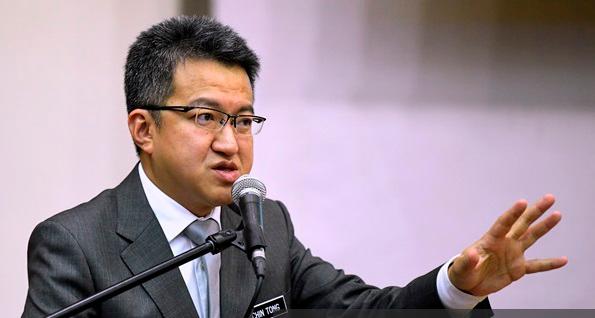KUALA LUMPUR: The government is looking at having a clear scorecard focused on high-quality investment and incentives to align with the New Industrial Master Plan 2030 (NIMP 2030), said Deputy Investment, Trade and Industry Minister Liew Chin Tong.
He also said that this is being carried out in collaboration with Bank Negara Malaysia, the Securities Commission, the Ministry of Investment, Trade, and Industry (Miti), and the Ministry of Finance (MoF).
“The government, through the work done by SC, Bank Negara, Miti and MoF, is now seriously looking at having a clear scorecard, especially for investment and for incentives, to move to the NIA (National Investment Aspirations) scorecard, and also based on the New Industrial Master Plan,” Liew said in his keynote address at the Securities Commission-World Bank Conference 2024 and the launch of ESG Disclosure Assessment of Malaysia’s Listed Companies today.
The aim of this initiative, he explained, is to ensure that incentivised companies do not need to constantly justify their contributions to Malaysian innovation, technology development, and R&D efforts.
“We must focus on building Malaysia’s R&D capabilities, advancing our technological expertise, and funding the potential for innovation in the country,” he said.
Liew pointed out that over the years, different segments of the Malaysian economy have acted almost in different spheres. “Malaysia Investment Development Authority (Mida) focuses on growing manufacturing, often via foreign direct investment.”
However, he said, government-linked investment corporations and government-linked corporations mostly shy away from manufacturing.
“The capital markets have not been at the forefront of manufacturing either. The New Industrial Master Plan 2030 is a notable attempt at collaboration between Miti and the Securities Commission,” he said.
The third challenge, he added, is to grow Malaysian technology, and more importantly, globally relevant Malaysian technology companies. “We must admit that despite having a head start in the semiconductor industry, Taiwan and Shenzhen, Penang and Malaysia have not built their TSMC, Samsung, Huawei, or BYD,” he said.
For Malaysia to be like South Korea through the second takeoff, Liew said, the country must grow Malaysian technology companies, starting with MSMEs, and especially mid-tier companies that are owning their technologies or adapting technologies innovatively.
“For Malaysia to reach the next level and to have high yet sustainable growth, the capital market and everyone else will have to collaborate to seize the once-in-a-generation opportunity of the second takeoff to make Malaysia a regional economic powerhouse,” he said.
The conference explores synergies within the capital market and Islamic capital market to bridge funding gaps for micro, small and medium entrepreneurs and mid-tier companies.
At the event, the SC and the World Bank launched a joint report titled “ESG Disclosure Assessment of Malaysia’s Listed Companies and Recommendations for Policy Development” which provides a baseline on environmental, social and governance reporting practice in Malaysia, offering key insights for companies and investors to enhance sustainability reporting to align with international best practices and remain competitive.
It aims to analyse the current state of ESG disclosure amongst listed companies and institutional investors, given the growing prominence of ESG and sustainability investments globally. It also provides reflections and recommendations for policymakers in the Malaysian capital market to foster improved ESG reporting, ensuring relevance and consistency globally.









